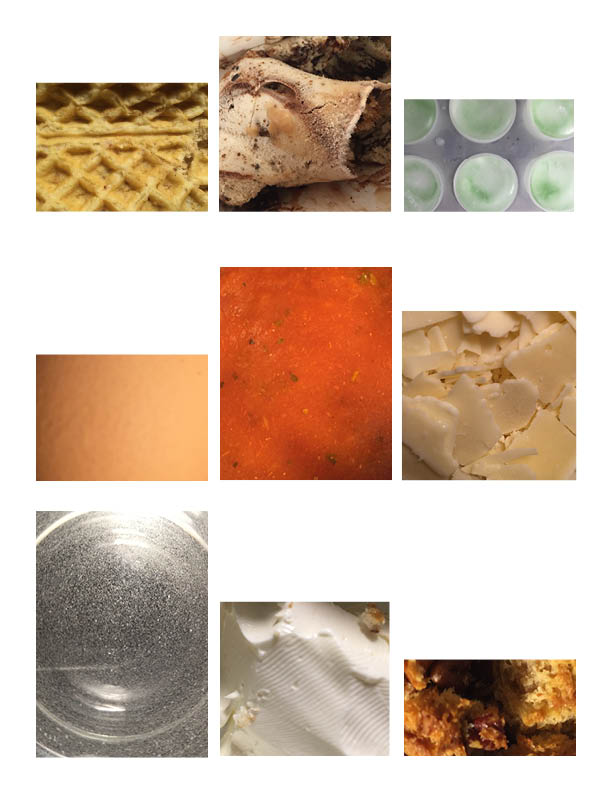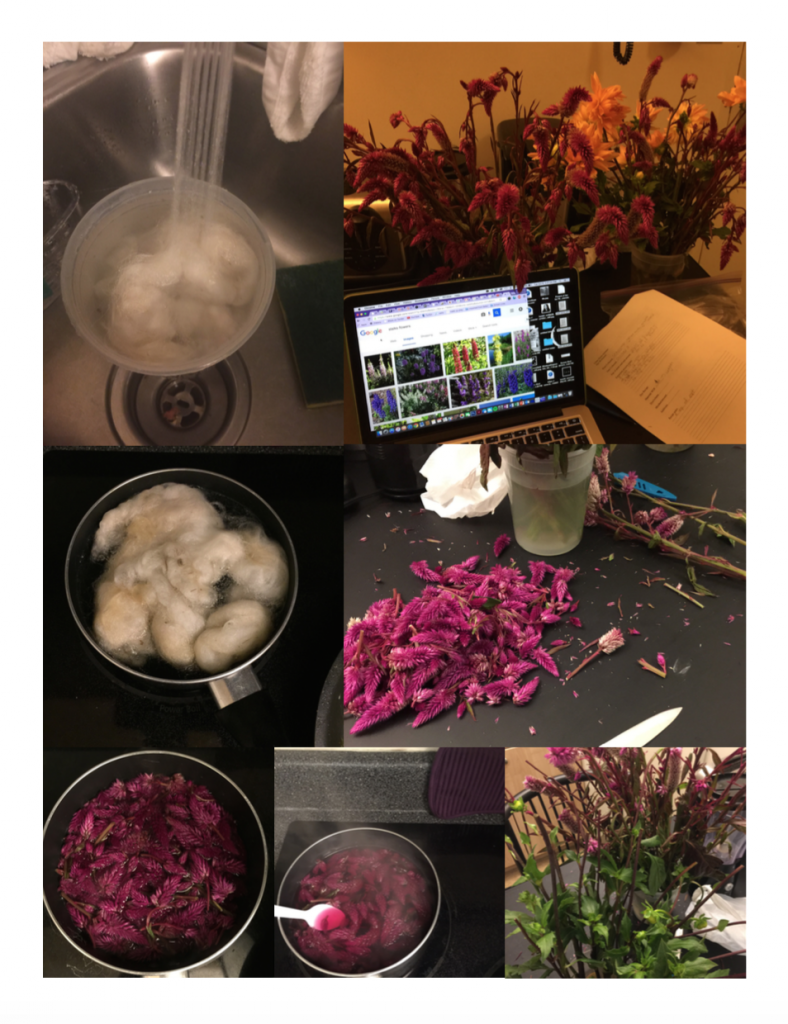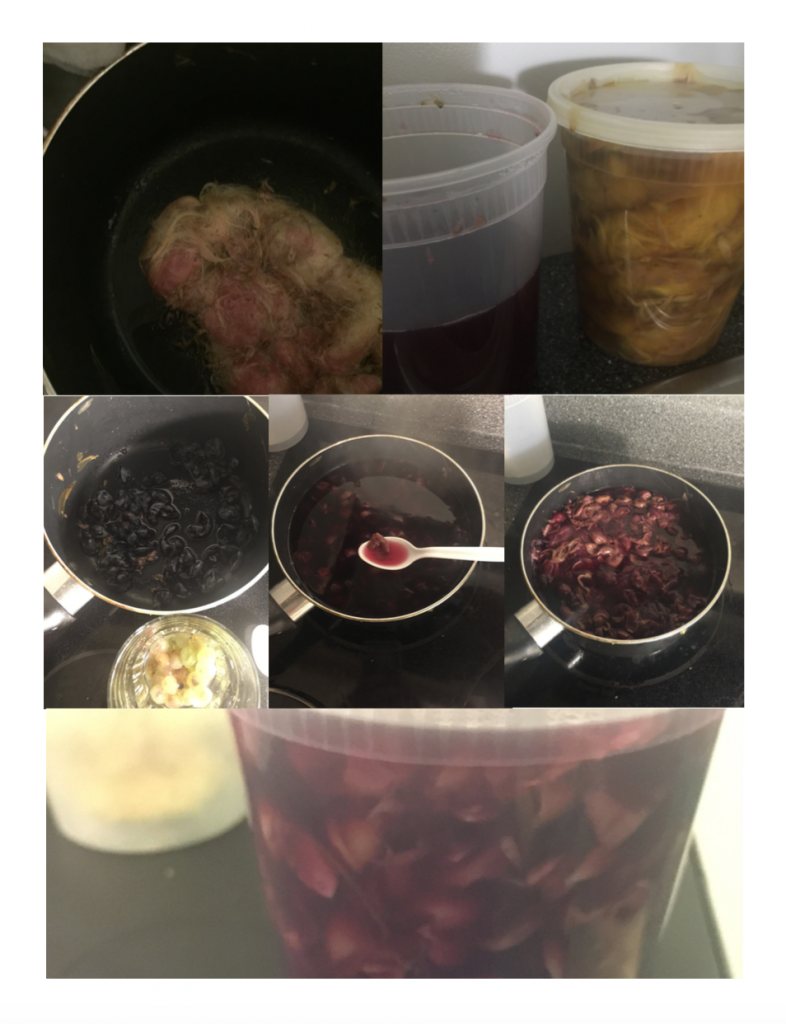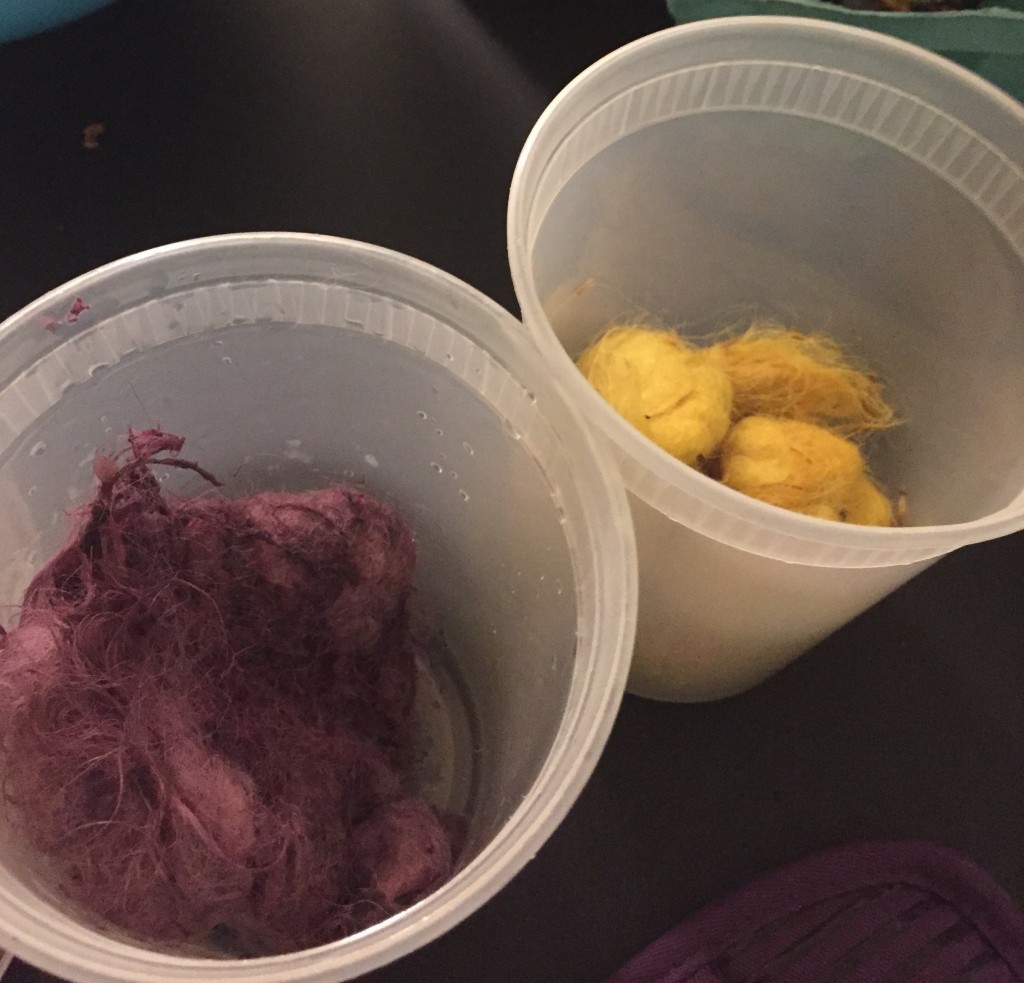My piece for The Story of What Happens details an experience I had working on a project for the class Sustainable Systems. The assignment was to color fabrics with a natural dye using raw scraps from foods or plants. The experiment elapsed for about a week between gathering materials and actually dyeing the fabric, but it was interesting to see this length of time complied into just a few minutes.
My original idea was to just portray this assignment. As we began learning about the different functions on Adobe Premiere, I wanted to change my idea to scenes about my day-to-day life after learning how to use the multi-cam function. However, I decided to stay just using the footage from the dyeing experiment as it would present a stronger piece.
Being able to connect a few of the scenes was difficult. Because this project spanned over such a long period and I jumped between two locations, I had to figure out a way to still connect these jumping scenes together.
For example, there was two points where I skipped from buying supplies from the farmers’ market at Union square and back to my dorm. In order to connect this together, I rearranged some of the stills I used in the film so that it fit better. I also cut down the length of time I spent a the market so that there wasn’t a big focus on it. The Union Square scenes were also turned into black and white to portray that those scenes came before the scenes in the dorm and that there was a distinct disconnect between the scenes.
I also tried to play around with sound. I thought the music went well with the beginning scene where I was walking, which is why I decided to include it mixed in with the sounds of the street noises. I also decided to include a narrative to explain the entire process that occurred to make the story clearer.
Another effect the I wanted to play around with was the position of the clips. In the first scene. I cut the scenes at points that matched the beat of the music. Towards the last scene I created a transparent overlay of one scene on top of another to display two correlating actions happening at once.
The last bit of editing I included was including a title scene. At first I didn’t think about putting it in the film, but in the end it felt appropriate to allow the viewer to know what this video was about as it is a sort of tutorial/process explanation.
The video seemed to simplify the time spent on the project. When viewing the video it, I could still sense the hard work put into dyeing the fabric, but the viewer doesn’t feel the dragging feeling of waiting for the for each part of the experiment to finish. It was interesting to get a sense of how both perspectives felt of actually being there in the moment versus just watching the moment happen.





